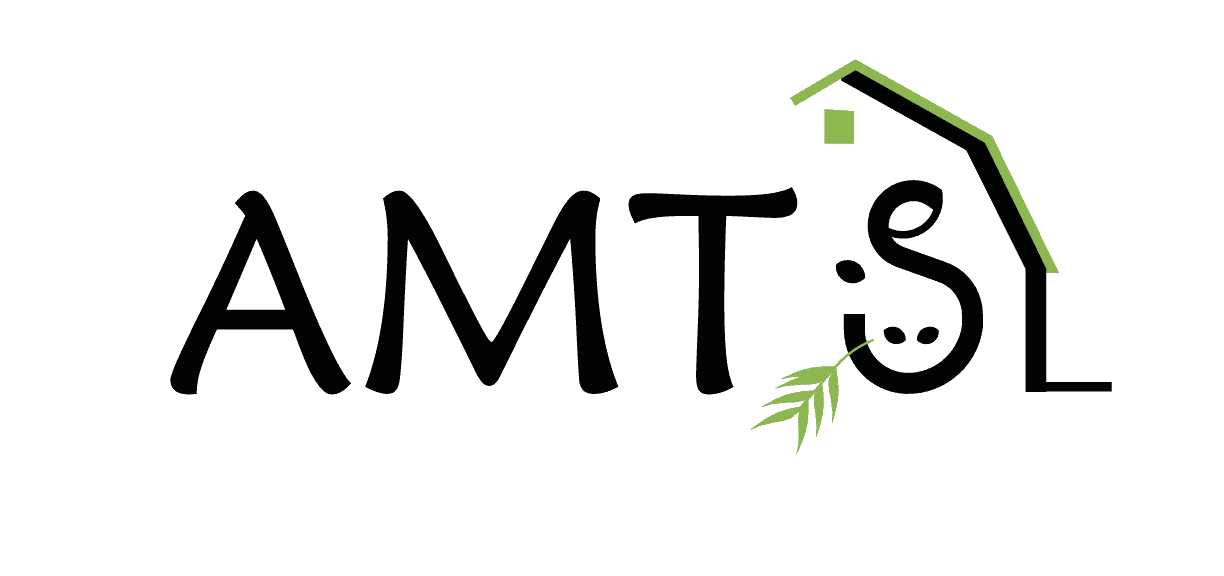We are very fortunate, here at AMTS, to have had special insight into the development of the CNCPS model and to have been on the development team. Danny G. Fox, Professor Emeritus, Cornell University, has served as mentor and colleague to several on our team. He can inarguably be called one of the fathers of CNCPS. He has graciously consented to write some blog postings. The following is the first in a series.
AMTS; a tool for precision feeding of Dairy Cattle
Danny G. Fox
Professor Emeritus, Cornell University
AMTS LLC was founded by Tom Tylutki, Caroline Rasmussen, and Vajesh (Vijay) Durbal to distribute and support the Cornell Net Carbohydrate and Protein System (CNCPS) model. I thought it might be of interest to AMTS users to know more about the development and evolution of the CNCPS model.
In 1978, Charlie Sniffen and I began discussions about common modeling interests, and conceived the idea of developing an applied nutrition model for beef and dairy cattle by physiological function (maintenance, growth, pregnancy, lactation, body reserves, rumen and intestinal digestion, metabolism). The second part of our vision was to have this model work on desktop computers, which were just coming on the market. We envisioned that someday most farms would have these potentially powerful tools that could perform many calculations quickly. That same year, we started developing and programming our model with two Radio Shack 56k desktop computers; one was purchased for me by Glen Paris, a beef cattle feeder, and the other was purchased for Charlie by George Allen, a dairy farmer. I took the lead on developing animal requirements, feed intake, and integrated model development, and Charlie took the lead on describing feeds by their fermentation characteristics and developing a sub model for predicting rumen fermentation. I began with the growth model Roy Black and I had developed at Michigan State University, and the cow model my graduate student Phil George developed for his PhD thesis. Charlie began with the system of Peter Van Soest to describe carbohydrate and protein fractions in feeds, and Dale Waldo’s approach for describing protein pools in the rumen and rates of passage. Our beginning feed library was based on the 1982 National Research Council United States-Canadian Tables of feed composition.
After a few years, it was apparent that the rumen model we had developed was not consistent with the feed fractionation system and we asked USDA rumen microbiologist Jim Russell to work with us to develop a rumen fermentation model that would be consistent with the feed fractionation system. Charlie’s programmer Jim O’Connor then worked with Jim Russell to develop and validate a mechanistic microbial growth sub model, based on his and other published studies.
As our cattle nutrition model developed and became larger, its size was greater than the capacity of desktop computers when programmed with conventional programming languages such as Radio Shack Basic and FORTRAN. A major breakthrough came in 1985 when the first Lotus 1-2-3 spreadsheet program became available. Programming our model with this spreadsheet allowed us to achieve another goal; have a model structure that could be easily modified and updated as new research became available that would improve it. After Jim O’Connor programmed our model into Lotus 1-2-3, we began to make rapid progress in model development and evaluation. In 1989, Charlie accepted a Dairy Nutrition position at Michigan State University and we finished CNCPS version 1 before he left (Fox et al., 1990). The following year I was asked to present the CNCPS model in a symposium at the American Society of Animal Science annual meeting, which required a manuscript to be submitted for publication in the Journal of Animal Science. I persuaded the editor to allow me to publish my CNCPS presentation as three papers in the Journal of Animal Science with 3 different first authors. After a challenging peer review process, these three and a fourth paper were published (Fox et al., Russell et al., and Sniffen et al., 1992; and O’Connor et al., 1993), which became CNCPS version 2. In this and subsequent publications, we presented validations of the accuracy of CNCPS predictions with data collected during experiments under controlled conditions. We also began evaluating it in case studies on dairy farms in which we collected the data needed to provide inputs to the CNCPS and to compare predicted and actual milk production before and after the CNCPS was used to formulate the lactating cow rations.
The first major use of the CNCPS by the National Research Council was in their revision of the Nutrient Requirements of Beef Cattle (NRC, 1996). I had the responsibility for developing the growth and body reserves chapter and the computer model for this revision. The committee conceived the idea of having two levels of solution. Level 1 used tabular values for feed net energy and ruminally degraded and undegraded protein based on actual measurements, and microbial protein was 13% of TDN. Level 2 used the CNCPS model to predict carbohydrate and protein degradation and ME and MP supply. Mike Barry programmed this NRC model in Lotus 1-2-3, and used a program called Baler to develop the interface and protect the equations.
After CNCPS versions 1 and 2 were published, other Cornell faculty became interested in it and we formed a CNCPS core group (Larry Chase, Alice Pell, Ron Pitt, Jim Russell and myself) to make decisions about its management and revision. Key decisions were: 1) published equations would not be changed until the modifications were tested and published, and 2) revised versions of the CNCPS had to pass a defender: challenger test; the revision (challenger) had to predict performance more accurately than the revised (defender) version. Mike Barry left in 1996 to work in industry, and Caroline Rasmussen assumed the responsibility of supporting the CNCPS. When Microsoft Office became available, she converted the CNCPS model into Excel, which became CNCPS version 3. When they were appointed assistant professors, Mike Van Amburgh and Tom Overton joined our CNCPS core faculty group in 1996 and 2000, respectively. During this time, Charlie Sniffen accepted a position as President of Miner Institute in Northern New York and Bill Chalupa and Ray Boston at the University of Pennsylvania and Charlie developed Cornell Penn Miner Dairy version 1 from CNCPS version 3. It was designed specifically for formulating rations on dairy farms, using a non-linear optimizer.
In the early 90’s, it became clear that non-point sources of N and P (i.e. fields) would soon be regulated, and we began evaluating and revising the CNCPS with a focus on reducing N and P excretion. From 1994 to 1996, Tom Tylutki worked for me as a research support specialist and used the CNCPS on two dairy farms to evaluate and re-formulate herd rations and as part of a whole farm nutrient management research project. We found that the model was a valuable tool for precision feeding to reduce N and P excretion and feed costs while improving milk production. Then, after applying this knowledge as an Extension Dairy Agent in Central NY for two years, Tom re-joined my group to work on the CNCPS and a Ph.D. in ruminant nutrition. Tom focused on developing a sub model for the CNCPS to predict urinary and fecal losses of N and P, and evaluating the CNCPS on dairy farms. After hiring a programmer (Vijay) who had just completed an M.S. in Agriculture Engineering, we began developing CNCPS version 4. Our goal was to revise version 3 to include: modifications to maintenance, growth and reserves sub models and the feed library according to those developed for the 1996 NRC; a Level 1 solution; our new sub model for nutrient excretion; programmed in Visual basic to include a linear optimizer, a more user friendly interface and reports, and work more efficiently for whole herd precision feeding and nutrient management. This version was released (Fox et al., 2000), and was used for CPM Dairy version 2 (Boston et al., 2000). During that time, Alice Pell served on the NRC committee that revised the Nutrient Requirements of Dairy Cattle (NRC, 2001) and was responsible for developing the computer model. They adapted our CNCPS maintenance and growth sub models for growing heifers, and energy reserves sub model for cows. Vijay programmed their model in Visual Basic.

Danny at his computer, look carefully at the file–Tom’s Research
In 2003, we released CNCPS version 5 (Fox et al., 2003, 2004), which included the CPM version 2 feed library and a separate tropical feed library, improved equations to predict P excretion, and many improvements in the reports. Also recommended laboratory procedures to determine the carbohydrate and protein fractions in feeds were provided in the user’s manual (Fox et al., 2003). According to our users, this version worked the best and had the fewest “bugs” of any of our releases of the CNCPS. By 2005, we had distributed the CNCPS to users in 42 different countries. Bill Chalupa and others used CNCPS version 5 to develop CPM Dairy version 3.0 (Tedeschi et al., 2008). This version of CPM included a revised feed library that Charlie and Bill developed that included expanded feed carbohydrate fractions and a fat sub model that Peter Moate and Bill developed. Subsequently, one of my graduate students Cristina Lanzas worked with Charlie Sniffen to refine and publish the expanded Carbohydrate fractionation that Bill and Charlie had developed for CPM version 3. Tom and Vijay then revised version 5 to include the expanded CHO fractions and CPM Dairy fat model and an integrated CPM and CNCPS feed library, which then became CNCPS version 6 (Tylutki et al., 2008).
Version 6 was finished in December 2005, the year I retired and transferred the leadership of the CNCPS research and development program at Cornell to Mike Van Amburgh. Tom, Caroline and Vijay founded AMTS to distribute and support the CNCPS model. Mike’s group made revisions to version 6, and released it as CNCPS version 6.1 (Van Amburgh et al., 2010). Vijay programmed version CNCPS version 6.1 for Mike, which was then integrated into AMTS. Mike’s group has developed version 6.5 (Van Amburgh et al., 2013), and they plan to release it in 2014. The major revisions in versions 6.1 and 6.5 include an updated feed library based primarily on commercial laboratory feed analyses for CNCPS carbohydrate and protein fractions and NDF digestion rates, more accurate prediction of protein fractions pool sizes and their ruminal degradation rates and amino acid supply and requirements, as evidenced by their validations in their recent Cornell Nutrition Conference paper (Van Amburgh et al., 2013).
Based on research and experiences of users, many improvements have been made in the CNCPS over the years since it was first published to improve its accuracy. The relationship between Mike’s CNCPS research and development program and Tom, Vijay and Caroline’s AMTS LLC that distributes and supports the CNCPS benefits the dairy industry by providing this tool for precision feeding of dairy cattle.
Papers cited (in chronological order)
Fox, D.G., C.J. Sniffen, J.D. O’Connor, J.B. Russell, and P.J. Van Soest. 1990. The Cornell Net Carbohydrate and Protein System for Evaluating Cattle Diets. Search:Agriculture. Cornell. Univ. Agr. Exp. Sta. no. 34.
Fox, D.G., C. J. Sniffen, J. D. O’Connor, P. J. Van Soest, and J. B. Russell. 1992. A net carbohydrate and protein system for evaluating cattle diets. III. Cattle requirements and diet adequacy. J. Animal Sci. 70:3578.
Russell, J.B., J.D. O’Connor, D.G. Fox, P.J. Van Soest, and C.J. Sniffen. 1992. A net carbohydrate and protein system for evaluating cattle diets. I. Ruminal fermentation. J. Animal Sci. 70:3551.
Sniffen, C. J., J. D. O’Connor, P. J. Van Soest, D. G. Fox, and J. B. Russell. 1992. A net carbohydrate and protein system for evaluating cattle diets. II. Carbohydrate and protein availability. J. Animal Sci. 70:3562.
O’Connor, J. D., C. J. Sniffen, D. G. Fox, and W. Chalupa. 1993. A net carbohydrate and protein system for evaluating cattle diets. IV. Predicting amino acid adequacy. J. Animal Sci. 71:1298.
National Research Council. 1996. Nutrient Requirements of Beef Cattle. (7th ed.) National Academy Press, Washington, DC.
National Research Council. 2001. Nutrient Requirements of Dairy Cattle. (7th ed.). National Academy Press, Washington, DC.
Fox, D.G., T.P. Tylutki, A.N. Pell, M.E. Van Amburgh, L.E. Chase, R.E. Pitt, L.O. Tedeschi, V.J. Durbal and C.N. Rasmussen. 2000. The Net Carbohydrate and Protein System version 4.0: a computer program for evaluating herd nutrition and nutrient excretion. Animal Science Dept. Mimeo 213, Cornell University, Ithaca, NY.
Boston, R.C., D.G. Fox, C. Sniffen, E. Janczewski, R. Munsen, and W. Chalupa. 2000. The conversion of a scientific model describing dairy cow nutrition and production to an industry tool: the CPM Dairy project. Chapt. 28, in Modeling Nutrient Utilization in Farm Animals, pp 361-3789. Eds. J.P. McNamara, J. France, and D. Beever. CaBI publishing, Oxford.
Fox, D.G., T.P. Tylutki, L.O. Tedeschi, M.E. Van Amburgh, L.E. Chase, A.N. Pell, T.R. Overton, and J.B. Russell. 2003. The Net Carbohydrate and Protein System for evaluating herd nutrition and nutrient excretion. Animal Science Dept. Mimeo 213 (revised), Cornell University, Ithaca, NY.
Fox, D.G., L.O. Tedeschi, T.P. Tylutki, J.B. Russell, M.E. Van Amburgh, L.E. Chase, A.N. Pell, and T.R. Overton. 2004. The Cornell Net Carbohydrate and Protein System Model for evaluating herd nutrition and nutrient excretion. Animal Feed Science and Technology 112 29-78.
Tedeschi, L.O., W. Chalupa, E.Janczewski, D.G. Fox, C. Sniffen, R. Munson, P.J. Kononoff and R. Boston. 2008. Evaluation and application of the CPM Dairy Model. J. Of Agricultural Sci. 146:171-182.
Tylutki, T.P., D. G. Fox, V.M. Durbal, L. O. Tedeschi, J. B. Russell, M. E. Van Amburgh, L. E. Chase, T. R. Overton and A. N. Pell. 2008. Cornell Net Carbohydrate and Protein System: A model for precision feeding of Dairy Cattle. Anim. Feed Sci. Technol. 143:174-202.
Van Amburgh, M. E., L. E. Chase, T. R. Overton, D. A. Ross, R. J. Rechtenwald, R. J. Higgs, and T. P. Tylutki. 2010. Updates to the Cornell Net Carbohydrate and Protein System v6.1 and implications for ration formulation. Pages 144-159 in 72nd Proceedings of Cornell Nutrition Conference for Feed Manufacturers, Syracuse, NY. Animal Science Dept., Cornell University.
Van Amburgh, M.E., A. Foskolos, E.A. Collas-Saenz, R.J. Higgs, and D.A. Ross. 2013. Updating the CNCPS feed library with new amino acid profiles and efficiencies of use: evaluation of model predictions-version 6.5. Pages 59-76 in Proceedings of the 75th Cornell Nutrition Conference for Feed Manufacturers, Syracuse, NY. Animal Science Dept., Cornell University.

